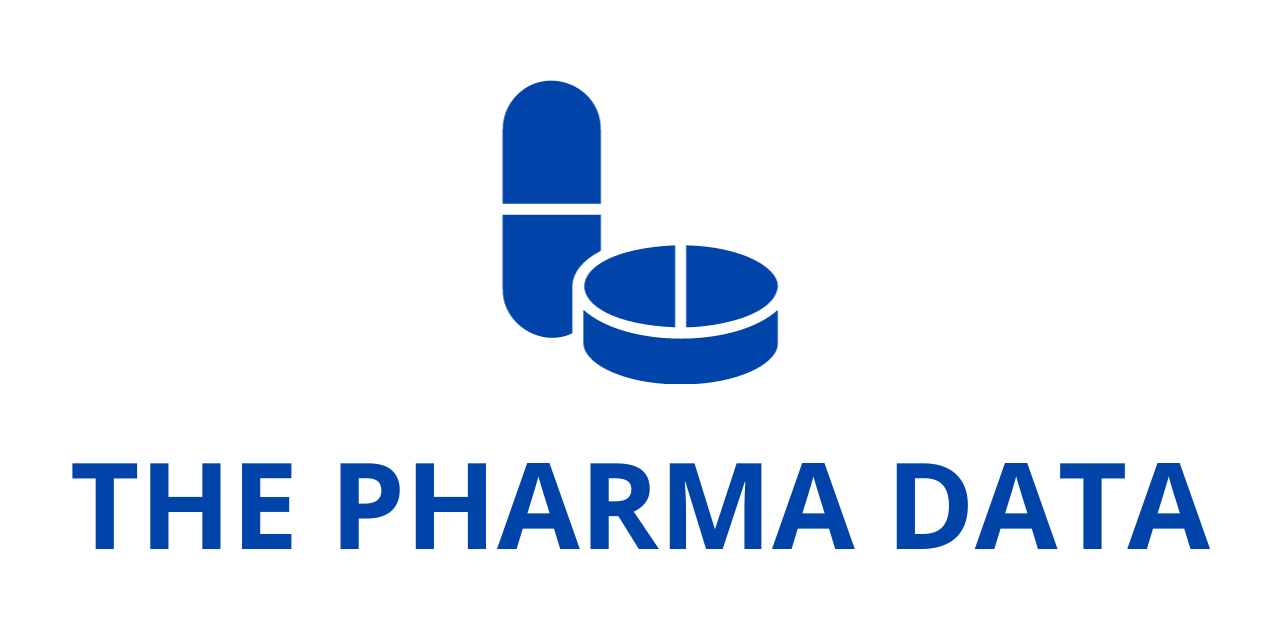
FDA Greenlights Label Update and Revised Dosing Schedule for Lilly’s Kisunla (donanemab‑azbt) in Early Symptomatic Alzheimer’s
Eli Lilly and Company today announced that the U.S. Food and Drug Administration (FDA) has approved an updated product label for Kisunla® (donanemab-azbt). This amyloid-targeting therapy has a newly recommended titration dosing schedule designed to optimize patient safety in those diagnosed with early symptomatic Alzheimer’s disease (AD). The therapy is approved for adults at both the mild cognitive impairment (MCI) stage and those experiencing mild dementia, provided their Alzheimer’s pathology is confirmed by biomarker tests.
What This Means
Alzheimer’s disease, a progressive and irreversible brain disorder, is characterized by the buildup of amyloid-beta plaques in the brain—a hallmark that contributes to cognitive decline. Kisunla, administered once monthly via infusion, targets and helps reduce these amyloid plaques. The new label reflects a revised dosing strategy that researchers believe may significantly reduce the risk of amyloid-related imaging abnormalities with edema/effusion (ARIA‑E), a recognized side effect linked to plaque-targeting therapies like donanemab. The FDA’s approval is based on compelling data from the TRAILBLAZER‑ALZ 6 clinical study.
Highlights from TRAILBLAZER‑ALZ 6 Study
Lilly’s pivotal TRAILBLAZER‑ALZ 6 clinical trial compared two dosing schedules: the original titration regimen versus a modified, more gradual titration. Here’s what the study revealed:
- ARIA‑E Incidence Reduced by ~40%
- By week 24, only 14% of patients on the modified dosing schedule experienced ARIA‑E, compared to 24% on the original regimen — a 41% reduction in relative risk.
- By week 52, incidence remained lower at 16% versus 25%, a 35% relative risk reduction.
- Overall ARIA Events
- Combined tracking of asymptomatic ARIA (either edema – ARIA‑E, or hemosiderin deposition – ARIA‑H) showed:
- 29% of patients on the modified schedule experienced some form of ARIA,
- 16% experienced ARIA‑E,
- 25% experienced ARIA‑H by week 52.
- Combined tracking of asymptomatic ARIA (either edema – ARIA‑E, or hemosiderin deposition – ARIA‑H) showed:
- Efficacy Preserved
- Brain amyloid plaque reduction at week 24 was 67% on the modified plan versus 69% with the original—virtually indistinguishable.
- Levels of phosphorylated tau protein (P‑tau217), another hallmark of Alzheimer’s progression, showed comparable reductions in both groups.
- Safety Profile
- No new safety concerns were identified. That said, as with the original dosing strategy, the study did note higher rates of hypersensitivity reactions and infusion-related reactions, warranting close monitoring during administration.
What’s New in the Dosing Schedule?
The revised titration regimen remains a once-monthly infusion of Kisunla but with a more gradual dosage increase:
- Rather than administering a full vial in the first infusion, the new schedule delays that full dose to the third infusion, reallocating one vial’s worth of the initial dose.
- This method draws out the ramp-up phase without reducing the overall cumulative dose by week 24.
- As a result, efficacy remains equivalent as shown in biomarker data, while the occurrence of ARIA‑E is significantly reduced.
Why ARIA‑E Matters
ARIA‑E refers to swelling or fluid accumulation in the brain, detectable through MRI scans. Typically asymptomatic, ARIA‑E can nonetheless pose serious risks—seizures, headaches, confusional states, and in rare cases, fatal consequences. These events are inherently linked to therapies targeting amyloid plaques, including Kisunla, and must be proactively monitored via imaging during treatment. The updated dosage timing is expected to mitigate early ARIA‑E occurrences, improving the comfort and safety profile for patients throughout the treatment course.
Clinical and Practical Benefits
- Enhanced Patient Safety
- A ~35–41% reduction in ARIA‑E cases is a significant step forward in managing one of the most concerning risks associated with anti-amyloid therapy.
- Easier Clinical Decision-Making
- “This label update will significantly aid healthcare professionals in evaluating appropriate treatment options,” stated Brandy Matthews, MD, FAAN, Lilly’s Vice President of Global & US Medical Affairs for Alzheimer’s Disease. “It underscores our commitment to patient safety while advancing Alzheimer’s disease treatment.” Lilly’s statement reinforces the importance of weighing efficacy with safety when introducing new therapies.
- Maintained Therapeutic Impact
- Despite the slower ramp-up, the modified plan achieves equivalent amyloid plaque and P‑tau217 reductions, making it a smart compromise between safety and efficacy.
- Streamlined Treatment Duration
- The total volume of medication delivered and the once-a-month scheduling remain unchanged, which supports existing infusion protocols and enhances treatment convenience.
- There is potential for shorter duration treatment—growth towards minimal plaque levels might allow stopping therapy earlier, though this individualized approach remains subject to future research and clinical discretion.
Detailed Data Summary
| Measure | Modified Dosing (24 wks) | Original Dosing (24 wks) | Modified (52 wks) | Original (52 wks) |
|---|---|---|---|---|
| ARIA‑E incidence | 14% | 24% | 16% | 25% |
| Relative risk reduction of ARIA‑E | 41% lower | — | 35% lower | — |
| Any ARIA** by week 52 | 29% | — | — | — |
| ARIA‑E (week 52) | 16% | — | — | — |
| ARIA‑H (week 52) | 25% | — | — | — |
| Amyloid plaque reduction | 67% | 69% | — | — |
| P‑tau217 reduction | Comparable | Comparable | — | — |
*ARIA‑H = amyloid‑related imaging abnormality with hemosiderin deposition
**ARIA = both ARIA‑E and ARIA‑H combined (includes asymptomatic MRI findings)
Background on Kisunla and Alzheimer’s Research
Kisunla (donanemab‑azbt) is one of several monoclonal antibody therapies targeting amyloid plaques in the brain, a hallmark of Alzheimer’s disease. Administered monthly via intravenous infusion, Kisunla has shown promise in slowing cognitive decline by clearing plaques and reducing phosphorylated tau (P‑tau217), another protein linked to neuronal damage and memory loss.
Clinical studies including TRAILBLAZER‑ALZ 2, 4, 5, and now 6 have progressively optimized dosing frameworks to maximize therapeutic benefit while minimizing adverse effects. The TRAILBLAZER‑ALZ 6 trial, published and peer-reviewed, offered robust evidence supporting the newer, safety-conscious schedule, prompting rigorous regulatory review.
Alzheimer’s advocacy groups and clinicians view this update as an important step forward—it signals a growing sophistication in treating the disease and minimizes risk for those receiving brain-clearing therapies.
What Patients and Caregivers Should Know
- Eligibility remains unchanged: therapy is intended for adults with early symptomatic Alzheimer’s (MCI or mild dementia), confirmed by diagnostic biomarkers.
- Monthly infusion visits persist, but with a slower dosage increase across the first three infusions.
- MRI scans will be part of routine monitoring to detect ARIA early, especially during the ramp-up.
- Side effects may include ARIA‑E or ARIA‑H (most often asymptomatic), infusion-related reactions (e.g., chills, fever, headache), or hypersensitivity.
- Healthcare teams—including neurologists, geriatricians, and infusion center staff—will need to adopt this updated schedule and closely monitor safety markers, while also assessing plaque reduction via PET scans or fluid biomarkers.
- An individualized plan for when to reassess and possibly stop treatment may be developed, guided by amyloid levels and patient response.
Expert Perspectives
- Dr. Brandy Matthews, Lilly VP of Alzheimer’s Medical Affairs, emphasized:
“This update underscores our unwavering commitment to patient safety and the advancement of Alzheimer’s disease treatment by potentially mitigating the risk of ARIA‑E.” - Neurology experts have expressed optimism:
- “Balancing efficacy with patient safety is critical,” said one Alzheimer’s clinician, noting that fewer ARIA‑E events could significantly reduce anxiety and imaging burdens for patients.
What Happens Next?
- Label Implementation
- The updated dosing schedule will be adopted immediately in Kisunla’s U.S. prescribing information. Lilly is also expected to submit similar label modifications to international regulatory bodies.
- Clinician Training & Resources
- Lilly will offer training for infusion centers, along with detailed materials on dosing adjustments, MRI monitoring schedules, and ARIA management.
- Ongoing Research
- Lilly continues to study Kisunla in broader contexts—including more diverse patient populations and long-term safety outcomes. They’re also exploring whether treatment could be safely discontinued once amyloid levels are sustainably low.
- Adoption Across Care Settings
- Neurologists, memory clinics, academic centers, and community infusion sites will adapt protocols. Real-world data collection will assess how this revised schedule performs outside of controlled trials.
The Bigger Picture in Alzheimer’s Treatment
- The approval of Aduhelm (aducanumab) in 2021 marked a turning point in amyloid-targeted therapy for Alzheimer’s, though linked to similar ARIA concerns.
- Since then, lecanemab and now donanemab (Kisunla) have joined the therapeutic landscape, with each peer-reviewed study aiming to refine:
- Who should receive treatment (MCI and mild dementia patients with confirmed amyloid).
- How — dosing regimens, monitoring protocols, and dosing schedules.
- When — weighing potential benefits against the risk of ARIA.
- The Kisunla label update represents a meaningful leap in addressing both safety and efficacy concerns.
In Summary
- The FDA-approved label update introduces a more gradual titration schedule for Kisunla, delaying the first full-dose till the third infusion.
- This modification maintains once-monthly dosing and therapeutic efficacy (amyloid and P‑tau217 reduction), while reducing ARIA‑E risk by 35–41%.
- There are no new safety concerns, though standard infusion reactions continue.
- This evolution marks an important advance in making amyloid-targeting Alzheimer’s therapies safer and more manageable for patients and providers alike.
Final Thought
The Kisunla label update reflects growing sophistication in Alzheimer’s care—where precision dosing, vigilant safety monitoring, and personalized treatment plans are increasingly prioritized. By retaining robust efficacy while reducing the risk of ARIA‑E, this new approach enhances the drug’s profile for clinicians and patients navigating the challenging early stages of Alzheimer’s disease.
References & Notes
- FDA-approved Kisunla label.
- TRAILBLAZER‑ALZ 6 trial data.
- PET and biomarker substudy results.
- ARIA-related imaging definitions and clinical implications.
- Infusion reaction safety data.
- Comparative peptide data from original vs. modified dosing regimens.
- Statistical risk reduction figures from Lilly’s submission.
- Mayo Clinic assay data for P‑tau217.




